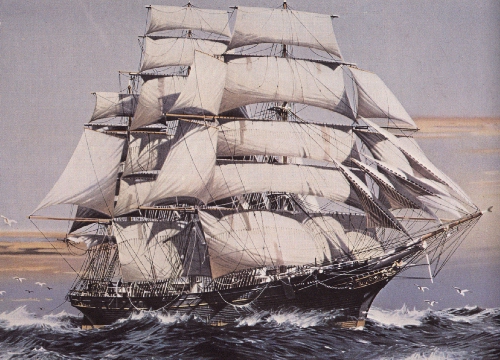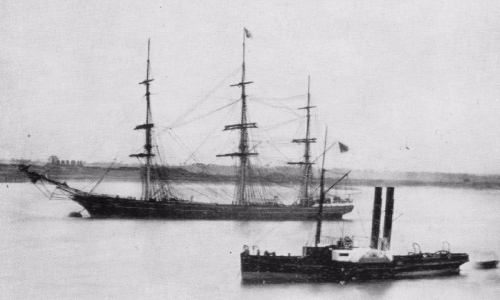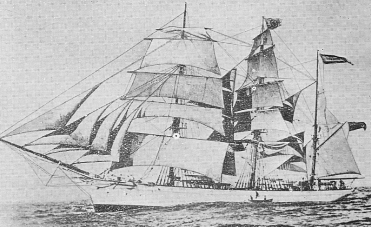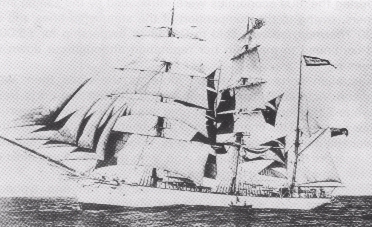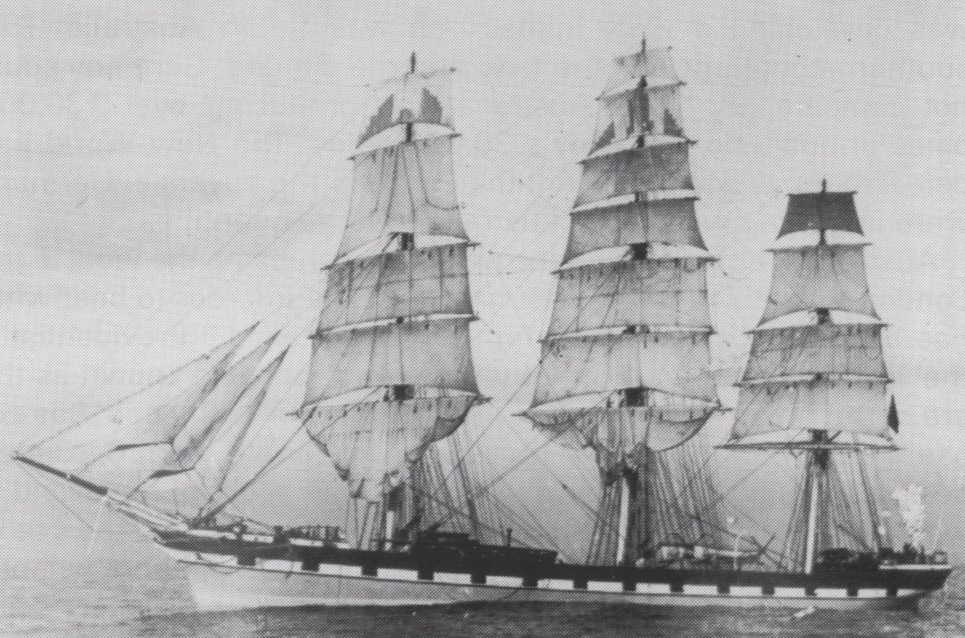Q: "How were the old ships rigged?"
The sail rigging of ships has a tradition of about 2000 years. But until 1200-1400, most ships had only 1 mast with one sail, the easiest rigging possible.
It was when ships became bigger and bigger, so the "question of propulsion" became important. It became clear that galleys, supporting speed by hundreds of oars,
were not always apppropriate. So until the age of the steam machines in 1850, the scientific developement of the ships hull and the sail rigging was the only way to
gain improvements in the "shipping business". Thus, the former heavy ships became more agile, faster and safer.
So, the masts carried ever more sails ...
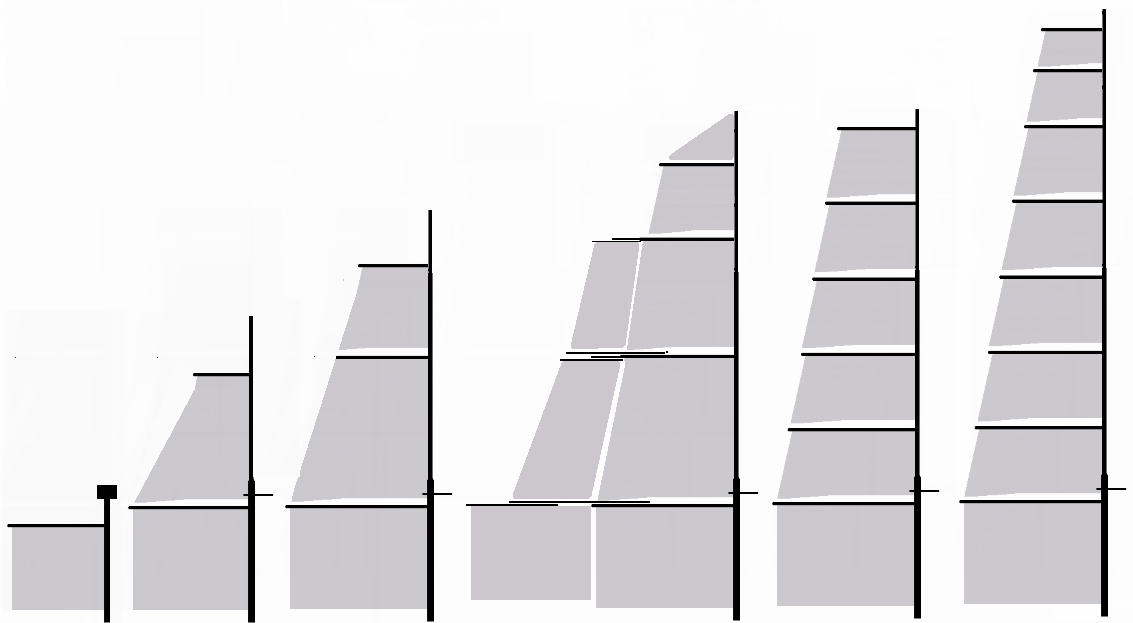
... and the ships had 2,3,4,5 or even more masts...
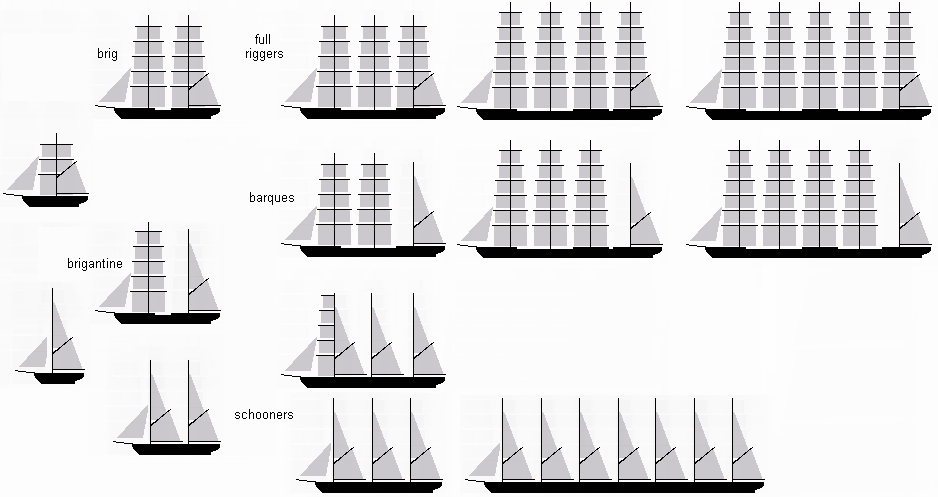
There are hundreds of different rigg types all over the world. Their "classifications" has some overlappings, a topsail schooner is very near to a barquentine.
One level deeper, we can go to the obvious lines seen on depictions: leech- and buntlines on the fore side of the sails, and clewlines on the aft side.
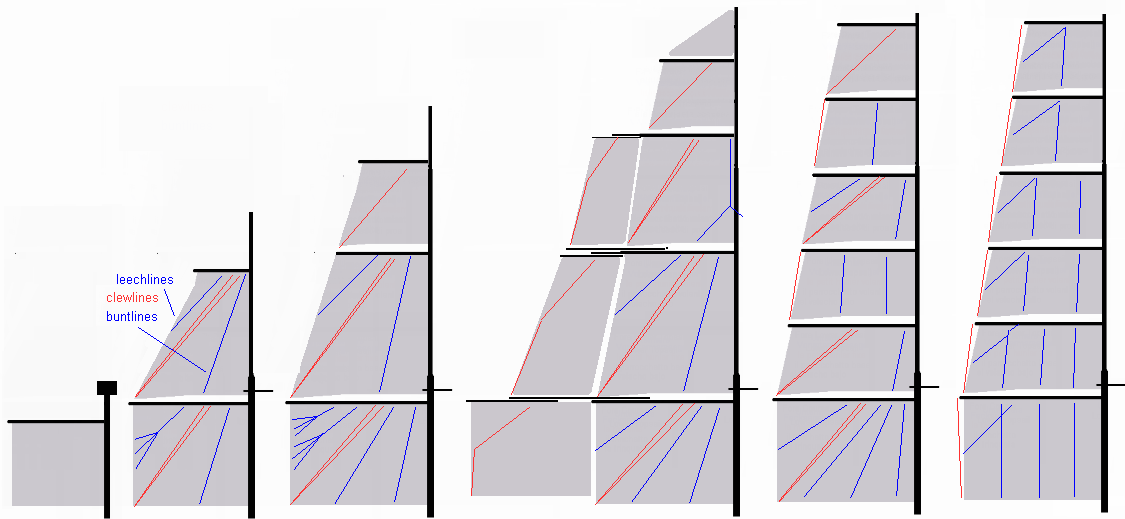
The first 1-sail-masts did not need any, the whole sail was taken down. In the following centuries, masts became higher, and less yards were veered
down to furl a sail. Thus, new lines were needed to furl the sail up to the yard center; in the 19th century, clewlines moved from the yard centers
to the yard arms, and thus, buntlines were altered and became more...many variants are possible and were altered as needed.
Q: "How do we know? What sources do we have?"
We have in fact very little evidence. We have to rely on ancient sources as books and depictions. The rigging of old ships, with the exception of only a handful of wrecks found,
is lost entirely. Secondary literature, which is most of our material available today, is only resampling and reconstructing these ancient descriptions.
Some Patterns for Reconstruction
|
The basis for the reconstruction of a rigging is the form of the ship (its´ type),
its´ shape, that is: the number and layout of decks, and the positions of the
masts upon them. You can use historic depictions for this (in fact, those are mostly the only reliable sources). Pictures say more than 1000 words ...
Then, You can proceed using the basic elements of the sails, because the physical problem
never changed: how can a sail be attached and raised to "some stable piece of wood" (the mast), in order to propulse the ship
in the desired direction,
without loosing the sails in the winds or harming the ship by listing over.
Which lines are needed to handle those sails,
when setting or furling them.
So here are the patterns: there are only a handful of sail types.
And all these sails have some distinct lines, and a certain number of them due to their size:
|
Running Rigging for a Staysail
-
Halyard: 1
-
Sheet: 2 (port + starboard)
-
Downhaul: 1
→ total: 4
|
Running Rigging for a Square Sail
-
Halyard: 1
-
Sheet: 2 (port + starboard)
+ Tacks for the lower sails ("courses"): 2 (port + starboard)
-
Topping Lift: 2 (port + starboard)
-
Brace: 2 (port + starboard)
-
Clewline: 2 (port + starboard)
-
Buntline: 2 to 8 (pairs, port + starboard)
-
Bowlines: 2 (port + starboard)
→ total: 13-19
Bowlines became out of use during 19th century.
|
Running Rigging for a Gaff Sail
-
Peak-Halyard: 1
-
Throat-Halyard: 1
-
Vangs: 2 (port + starboard)
-
Spanker Sheet: 2 (port + starboard)
-
Outhaul: 1
-
Inhaul: 2 to 4
→ total: 6-10
|
Running Rigging for a Studding Sail
-
Halyard: 1-2
-
Sheet, Tack: je 1
-
others, up to 4
→ total: 3-8
Studding Sails came out of use after 1850, the yards were wide enough then...
|
So You can set up a matrix showing all elements and countings for all sails:
Staysail:
|
Sail / Line
|
Halyard:
|
Sheet:
|
Downhaul:
|
|
[Stay-Name]-Sail:
|
[Stay-Name]-Halyard
1
|
[Stay-Name]-Sheet
2
|
[Stay-Name]-Downhaul
1
|
Square Sail
|
Sail / Line
|
Halyard:
|
Sheet:
Tack:
|
Topping Lift:
|
Brace:
|
Clewline:
|
Buntline:
|
Bowlines:
|
|
[Mast- and Yard-Name] -Sail:
|
[Mast- and Yard-Name] -Halyard
2
|
[Mast- and Yard-Name] -Sheet
[Mast- and Yard-Name] -Tack
4
|
[Mast- and Yard-Name] -Topping Lift
2
|
[Mast- and Yard-Name] -Brace
2
|
[Mast- and Yard-Name] -Clewline
2
|
[Mast- and Yard-Name] -Buntline
6
|
[Mast- and Yard-Name] -Bowlines
2
|
Gaff Sail at the Mast:
|
Sail / Line
|
Peak- and Throat-Halyard:
|
Boom Sheet:
|
Outhaul:
|
Inhaul:
|
|
[Gaff-Name]-Sail:
|
[Gaff-Name]-Peak-/Throat-Halyard
2
|
[Gaff-Name]-Sheet
1-2
|
[Gaff-Name]-Outhaul
1-2
|
[Gaff-Name]-Inhaul
2-8
|
Studding Sail:
|
Sail / Line
|
Inner and Outer Halyard:
|
Sheet and Tack:
|
Topping Lift:
|
Downhaul:
|
Clew:
|
|
[Studding Yard]-Sail:
|
[Studding Yard]-Inner and Outer Halyard
1-2
|
[Studding Yard]-Sheet and Tack
2
|
[Studding Yard]-Topping Lift
0-1
|
[Studding Yard]-Downhaul (Martingale)
1
lower studding sails only
|
[Studding Yard]-Gei (Guy)
2
lower studding sails only
|
where two studding sails can be set on the same yard (port and starboard).
Thus, we can name and count all the lines of the Running Rigging, even if we have no
chance to see the ship with our own eyes.
You only need the names and the number of the sails. This information can be taken
even from small old fotos or paintings. The rest can be reconstructed rather accurately:
Example: the Portuguese three-masted barque "Sagres II"
NOTE: On modern windjammers like the Sagres, the lower yard, tower topsail and often lower topgallant are fixed in a rack and have no halyards. But in this case, I do AS IF
this ship had halyards on those, too ...
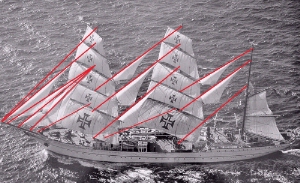
So we have:
2 square sail masts (Fore and Main), each with 5 yards (Course, Lower and Upper Topsail, Topgallant Sail, Royal)
1 Mizzen mast with 2 spankers (lower and upper) and a gaff topsail.
4 staysail on the bowsprit
3 staysails between two masts
So we have the following collection for the entire Running Rigging:
- Fore Staysails and Jibs:
|
Sail / Line
|
Halyard:
|
Sheet:
|
Downhaul:
|
|
Fore-Stay-Sail:
|
Fore-Stay-Halyard
1
|
Fore-Stay-Sheet
2
|
Fore-Stay-Downhaul
1
|
|
Inner Jib:
|
Inner Jib-Halyard
1
|
Inner Jib-Sheet
2
|
Inner Jib-Downhaul
1
|
|
Jib:
|
Jib-Halyard
1
|
Jib-Sheet
2
|
Jib-Downhaul
1
|
|
Outer Jib:
|
Outer Jib-Halyard
1
|
Outer Jib-Sheet
2
|
Outer Jib-Downhaul
1
|
- Fore Mast Square Sails
|
Sail / Line
|
Halyard:
|
Sheet:
Tack:
|
Topping Lift:
|
Brace:
|
Clewline:
|
Buntline:
|
Bowlines:
|
|
Fore Course:
|
Fore-Yard-Halyard
2
|
Fore-Sheet
Fore-Tack
4
|
Fore-Topping Lift
2
|
Fore-Brace
2
|
Fore-Clewline
2
|
Fore-Buntline
6
|
Fore-Bowlines
2
|
|
Fore-Lower-Top-Sail:
|
Fore-Lower-Top-Halyard
1
|
Fore-Lower-Top-Sheet
2
|
Fore-Lower-Top-Topping Lift
2
|
Fore-Lower-Top-Brace
2
|
Fore-Lower-Top-Clewline
2
|
Fore-Lower-Top-Buntline
6
|
Fore-Lower-Top-Bowlines
2
|
|
Fore-Upper-Top-Sail:
|
Fore-Upper-Top-Halyard
1
|
Fore-Upper-Top-Sheet
2
|
Fore-Upper-Top-Topping Lift
2
|
Fore-Upper-Top-Brace
2
|
Fore-Upper-Top-Downhaul
(Fore-Upper-Top-Clewline)
2
|
Fore-Upper-Top-Buntline
2
|
Fore-Upper-Top-Bowlines
2
|
|
Fore-Topgallant-Sail:
|
Fore-Topgallant-Halyard
1
|
Fore-Topgallant-Sheet
2
|
Fore-Topgallant-Topping Lift
2
|
Fore-Topgallant-Brace
2
|
Fore-Topgallant-Clewline
2
|
Fore-Topgallant-Buntline
6
|
Fore-Topgallant-Bowlines
2
|
|
Fore-Royal-Sail:
|
Fore-Royal-Halyard
1
|
Fore-Royal-Sheet
2
|
Fore-Royal-Topping Lift
2
|
Fore-Royal-Brace
2
|
Fore-Royal-Clewline
2
|
Fore-Royal-Buntline
4
|
Fore-Royal-Bowlines
|
- Staysails between Fore- and Main-mast
|
Sail / Line
|
Halyard:
|
Sheet:
|
Downhaul:
|
|
Main-Stay-Sail:
|
Main-Stay-Halyard
1
|
Main-Stay-Sheet
2
|
Main-Stay-Downhaul
1
|
|
Main-Topgallant Stay-Sail:
|
Main-Topgallant Stay-Halyard
1
|
Main-Topgallant Stay-Sheet
2
|
Main-Topgallant Stay-Downhaul
1
|
|
Main-Royal-Stay-Sail:
|
Main-Royal-Stay-Halyard
1
|
Main-Royal-Stay-Sheet
2
|
Main-Royal-Stay-Downhaul
1
|
- Main Mast Square Sails
|
Sail / Line
|
Halyard:
|
Sheet:
Tack:
|
Topping Lift:
|
Brace:
|
Clewline:
|
Buntline:
|
Bowlines:
|
|
Main Course:
|
Main-Yard-Halyard
2
|
Main-Sheet
Main-Tack
4
|
Main-Topping Lift
2
|
Main-Brace
2
|
Main-Clewline
2
|
Main-Buntline
6
|
Main-Bowlines
2
|
|
Main-Lower-Top-Sail:
|
Main-Lower-Top-Halyard
1
|
Main-Lower-Top-Sheet
2
|
Main-Lower-Top-Topping Lift
2
|
Main-Lower-Top-Brace
2
|
Main-Lower-Top-Clewline
2
|
Main-Lower-Top-Buntline
6
|
Main-Lower-Top-Bowlines
2
|
|
Main-Upper-Top-Sail:
|
Main-Upper-Top-Halyard
1
|
Main-Upper-Top-Sheet
2
|
Main-Upper-Top-Topping Lift
2
|
Main-Upper-Top-Brace
2
|
Main-Upper-Top-Downhaul
(Main-Upper-Top-Clewline)
2
|
Main-Upper-Top-Buntline
2
|
Main-Upper-Top-Bowlines
2
|
|
Main-Topgallant-Sail:
|
Main-Topgallant-Halyard
1
|
Main-Topgallant-Sheet
2
|
Main-Topgallant-Topping Lift
2
|
Main-Topgallant-Brace
2
|
Main-Topgallant-Clewline
2
|
Main-Topgallant-Buntline
6
|
Main-Topgallant-Bowlines
2
|
|
Main-Royal-Sail:
|
Main-Royal-Halyard
1
|
Main-Royal-Sheet
2
|
Main-Royal-Topping Lift
2
|
Main-Royal-Brace
2
|
Main-Royal-Clewline
2
|
Main-Royal-Buntline
4
|
Main-Royal-Bowlines
|
- Staysails between Main- and Mizzen mast
|
Sail / Line
|
Halyard:
|
Sheet:
|
Downhaul:
|
|
Mizzen Stay-Sail:
|
Mizzen Stay-Halyard
1
|
Mizzen sStay-Sheet
2
|
Mizzen Stay-Downhaul
1
|
|
Mizzen Topgallant Stay-Sail:
|
Mizzen Topgallant Stay-Halyard
1
|
Mizzen Topgallant Stay-Sheet
2
|
Mizzen Topgallant Stay-Downhaul
1
|
|
Mizzen Royal-Stay-Sail:
|
Mizzen Royal-Stay-Halyard
1
|
Mizzen Royal-Stay-Sheet
2
|
Mizzen Royal-Stay-Downhaul
1
|
- Mizzen Mast Sails
|
Sail / Line
|
Outhaul:
|
Downhaul:
|
Sheet:
|
Inhaul:
|
Buntline:
|
Gaff-Sheet:
|
|
Lower-Mizzen -Sail:
|
Lower-Mizzen -Outhaul
1
|
Lower-Mizzen -Downhaul
1
|
Lower-Mizzen -Sheet
1
|
Lower-Mizzen -Inhaul
1
|
Lower-Mizzen -Buntline
1
|
Spanker Sheet
2
|
|
Upper-Mizzen -Sail:
|
Upper-Mizzen -Outhaul
1
|
Upper-Mizzen -Downhaul
1
|
Upper-Mizzen -Sheet
1
|
Upper-Mizzen -Inhaul
1
|
Upper-Mizzen -Buntline
2
|
Vangs
2
|
|
Mizzen -Gaff-top-Sail:
|
Mizzen -Gaff-top-PiekHalyard
1
|
Mizzen -Gaff-top-Downhaul
1
|
Mizzen -Gaff-top-Sheet
1
|
|
|
|
OK. What is left now are the
Belaying Positions ...
Here are some 20 books dedicated to rigging:
| TITLE | AUTHOR | PUBLISHER | YEAR | PAGES |
Die Brigg
Modellbaureihe DK (German) |
Dåbritz/Quinger |
DK |
1983 |
64 |
Eagle Seamanship - A Manual for Square-Rigger Sailing
(English) |
Regan + Johnson |
Naval Institute Press |
1978 |
200 |
Eighteenth-century Rigs & Rigging [Bemastung und Takelung von Schiffen des 18. Jahrhunderts]
(English) |
Marquardt, Karl-Heinz |
Conway |
1992 |
330 |
Masting and Rigging - The Clipper Ship and Ocean Carrier
(English) |
Underhill, Harold A. |
Brown, Son & Ferguson |
1965 |
290 |
Masting, Mast-Making and Rigging of Ships
(English) |
Kipping, Robert |
Crosby Lockwood and son |
1898 |
158 |
Plank-on-Frame Models and Scale Masting and Rigging Vol I+II
(English) |
Underhill, Harold A. |
Brown, Son & Ferguson |
1958/1974 |
160+160 |
Rigging Period Ship Models
(German) |
Petersson, Lennarth |
Catham Publishing, London |
2000 |
120 |
Sailing Ship Rigs & Rigging
(English) |
Underhill, Harold A. |
Brown, Son & Ferguson |
1938/1969 |
128 |
Seventeenth Century Rigging
(English) |
Anderson, R.C. |
Marshall |
1955 |
146 |
Square Rigged Sailing Ships
(English) |
MacGregor, David R |
MAP |
1977 |
144 |
Square Rigger Days
(English) |
Domville-Fife, C.W. |
Seeley Service & Co Ltd |
1938 |
252 |
Square Riggers - The Final Epoch (autogram of the author!!!)
(English) |
Hurst, Alex A. |
Teredo Books |
1972 |
542 |
Steel´s Art of Rigging 1818
(English) |
|
Fisher Nautical Press |
1818/1974 |
140 |
Steel´s Elements of Mastmaking, Sailmaking and Rigging
(English) |
|
Edward W. Sweetman Co, NY |
1794/1932/(1980) |
300 |
The Art of Rigging
(English) |
Biddlecombe, G + Pentecost,E.H. |
Edward W. Sweetman Co, NY |
1848/1969 |
156 |
The Masting and Rigging of English Ships of War 1625-1860
(English) |
Lees, James |
Conway |
1979 |
196 |
The Rigger´s Guide
(English) |
Bushell, Charles |
Griffin & Co (Portsmouth) |
1906 |
254 |
The Rigging of Ships in the days of the spritsail topmast, 1600-1720
(English) |
Anderson, R.C. |
Dover |
1927/1994 |
278 |
|



